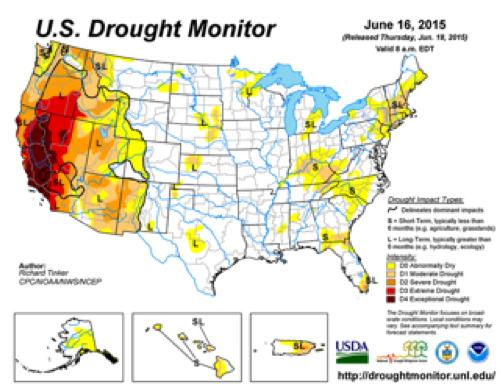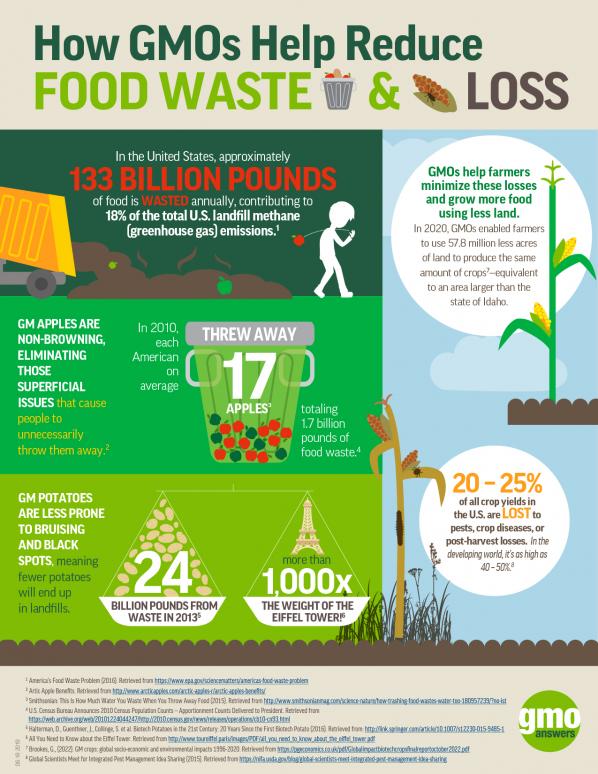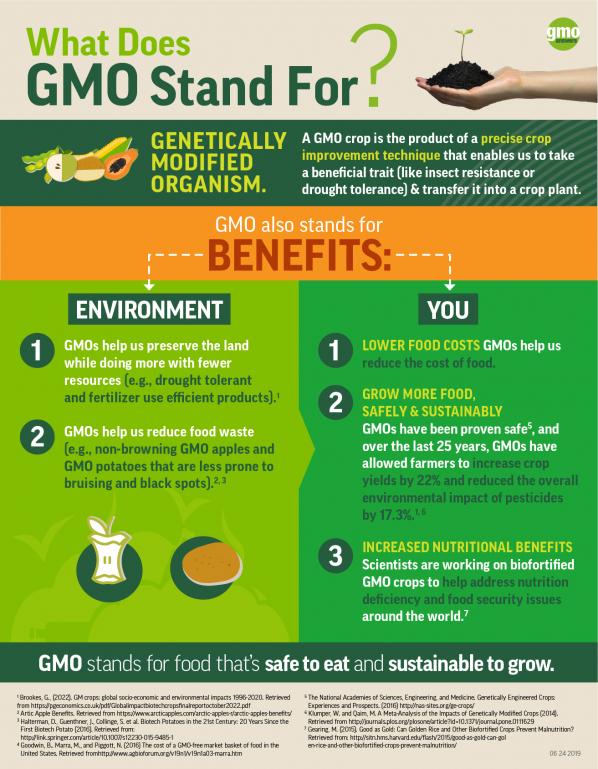Growing More with Less: Learn about Drought Resistant Crops
Close your eyes and picture a hot summer day; there’s corn on the grill, cool water in the pool and a refreshing drink in your hand. We often think of summer as having perfect warm weather, but as we’re currently experiencing periods of prolonged drought in the western United States and other parts of the world, water use and conservation is top of mind.
 Water is one of the most basic inputs needed to grow any crop, including the corn you might grill in your backyard during a summer barbeque. Increasing drought conditions, combined with a growing demand for water, is turning attention to agricultural water use. According to the International Service for the Acquisition of Agri-Biotech Applications (ISAAA), “tolerance to drought and efficient water usage should be assigned the highest priority in developing future crops.” Farmers utilize many tools to use water as efficiently as possible, and recently, GM crops have been added to that list of options.
Water is one of the most basic inputs needed to grow any crop, including the corn you might grill in your backyard during a summer barbeque. Increasing drought conditions, combined with a growing demand for water, is turning attention to agricultural water use. According to the International Service for the Acquisition of Agri-Biotech Applications (ISAAA), “tolerance to drought and efficient water usage should be assigned the highest priority in developing future crops.” Farmers utilize many tools to use water as efficiently as possible, and recently, GM crops have been added to that list of options.
Dr. Alan McHughen, cooperative extension biotechnology specialist at the University of California, Riverside, describes the variety of technological tools available to farmers to overcome less than desirable weather conditions. He says:
“Modern technology spans a broad spectrum, from improved weather models predicting seasonal rainfall to monitoring moisture levels in soils across the farm, to a range of new crop cultivars better able to withstand the stress of reduced water. Farmers should be able to adopt all of these tools to maximize their use of available water, and optimize food production, while minimizing environmental impacts.”
Irrigation is one tool that farmers have used throughout agricultural history to continue to grow food in areas where there is a lack of water at optimal times. Modern irrigation tools range from center pivot systems that apply water from overhead nozzles, to subsurface irrigation systems and more. Another tool is conservation tillage, which is a production practice that involves leaving a harvested crop in a field and planting the next season’s crop into the plant residue, which acts as “mulch” that conserves soil moisture. Biotechnology has played a role in helping farmers adopt conservation tillage practices, with the introduction of herbicide resistant crops. This technology can continue to provide benefits to farmers with the introduction of drought resistant traits. In addition, advanced molecular breeding has enabled the identification of and selective breeding for drought tolerance traits that are native to a particular crop. Other options include modifying planting density, changing crop rotation patterns, upgrading irrigation equipment and planting cover crops.
Drought isn’t a new phenomenon; it’s an issue humans have dealt with for thousands of years. Dr. McHughen explains:
“Drought has visited human populations since the beginning of agriculture, and our ancestral and current agricultural scientists have been developing new breeds with better water use efficiency traits and other strategies (e.g. irrigation) to fight the ravages of drought. But we’ve reached the limit of what we can do with conventional technologies and must find new mechanisms. Biotechnology is one obvious tool to apply by offering better drought resistance genes, stress response genes and associated traits.”
Summer is the growing season for many crops, and a lack of water availability can hinder food, fiber and fuel production. Crops that are developed to perform well under drought conditions are valuable tools for modern farmers.
 Heat tolerance is another trait that is closely related to drought resistance. Dr. Curt Hannah at the University of Florida says, “Certainly changes that lessen the adverse effects of drought will become increasingly important as growth conditions change. Lessening the effects of higher temperatures also associated with climate change is a critical factor.”
Heat tolerance is another trait that is closely related to drought resistance. Dr. Curt Hannah at the University of Florida says, “Certainly changes that lessen the adverse effects of drought will become increasingly important as growth conditions change. Lessening the effects of higher temperatures also associated with climate change is a critical factor.”
Dr. Hannah points out that a research project at the University of Florida is doing just that. “We have identified several transgenes that enhance yield under high temperature conditions. Our approach is to identify enzymatic strips that are temperature labile (easily changed) and then engineer the appropriate transgenes.”
He goes on to explain that there are other ways to achieve this goal without using biotechnology. He says, “While, in theory, we could screen large collections of diverse germplasm for these changes in a more conventional approach, such an approach has no guarantee of yielding positive results and would be a huge amount of work. The transgenic (GMO) approach is more direct, more precise and has a much higher probability of working.”
Learn more about current and future crops that may be helpful tools for farmers when dealing with drought:
- Monsanto Company developed DroughtGard corn
- DuPont Pioneer identified a transgene that reduces ethylene, a naturally occurring hormone that tends to shut down a plant in times of stress
- ISAAA Special Feature on Drought Tolerant Maize (PDF)
- John Innes Centre research on drought tolerant barley
- University of California research on drought response pathways

